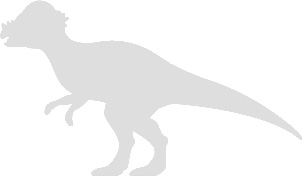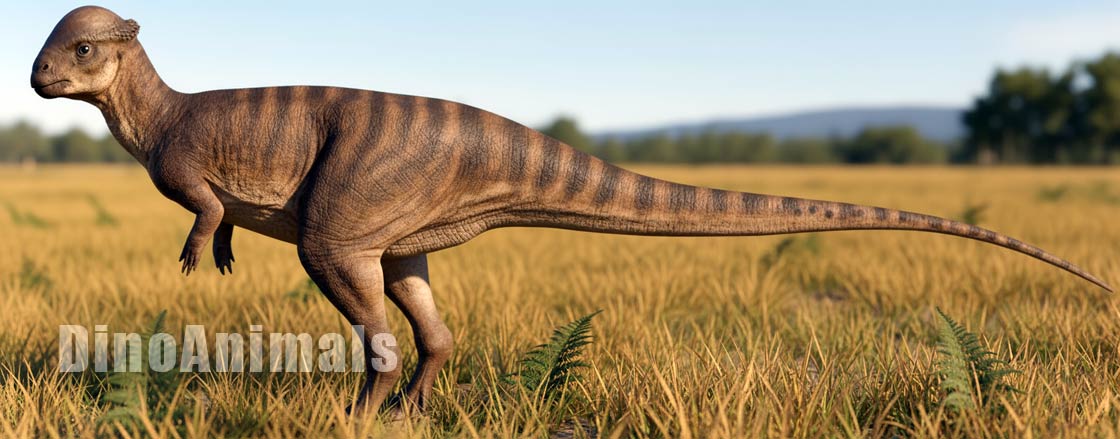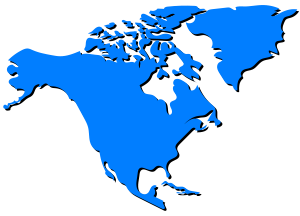Every month, 100,000 readers use the Dinosaur Database, but we receive no support from you. Developing and updating the database requires a lot of work. If you want it to remain open and be updated, please support us via the "Buy us a coffee" button available on every page or via the Support page.
Dinosaur: Brontotholus harmoni

| Length*: | 3.8 m | 12.5 ft |
| Weight*: | 250 kg | 551 lb |
*The largest known specimen
Period
Epoch: Late Cretaceous
Stage: Late Campanian
Years: 75.5–75.3 Ma
Details
Status: valid
Author: Woodruff et al.
Year: 2025
Distribution
Area: North America
Country: USA, Canada
Region: Montana, Alberta
Formation: Two Medicine, Oldman
Description
Brontotholus harmoni
Brontotholus harmoni is a pachycephalosaurid dinosaur from the late Campanian stage of the Late Cretaceous, discovered in the Two Medicine Formation of Montana, United States, and the Oldman Formation of Alberta, Canada. Known from multiple frontoparietal domes, it is the first pachycephalosaurid identified from the Two Medicine Formation and the third largest North American member of the clade, with an estimated body length of up to 4 m (13 ft). This taxon refutes previous hypotheses of anagenetic evolution between Stegoceras validum and Pachycephalosaurus wyomingensis, highlighting greater diversity and earlier appearance of large-bodied pachycephalosaurids in the Middle Campanian.
Etymology
The generic name Brontotholus combines the Ancient Greek words “brontē” (thunder) and “tholos” (dome), inspired by the 1985 film Mad Max Beyond Thunderdome and the paratype locality named “Beyond Thunder Dome.” The specific name harmoni honors the late Robert “Bob” Harmon, former chief preparator at the Museum of the Rockies.
Physical Characteristics
- Thickened frontoparietal dome, with anteroposterior lengths ranging from 52 mm to 178 mm.
- Ornamented skull with a massive dome structure, indicating robust cranial morphology.
- Bipedal gait and heterodont dentition.
- Ossified myosepta in the tail.
Diet and Feeding Habits
Herbivore; likely consumed plants such as ferns and conifers; heterodont dentition suggests possible omnivory, but primarily adapted for browsing low vegetation.
Habitat and Distribution
North America, United States (Montana), Canada (Alberta), Two Medicine Formation and Oldman Formation.
Paleoenvironment
Fluvial floodplains with seasonal flooding and humid conditions; co-occurring taxa include Daspletosaurus, ceratopsids, hadrosaurids, ankylosaurids, and oviraptorosaurids.
Behavior and Social Structure
Inferred from clade: possible head-butting for dominance or display; may have lived in herds based on pachycephalosaurid trackways and bonebeds.
Discovery and Research
Holotype MOR 480 (frontoparietal dome), collected in 1987 from the Two Medicine Formation; described in 2025. Referred material includes paratype MOR 479 and tentatively MOR 453, MOR 550, TMP 1989.69.21. Phylogenetic analyses place it as sister to Foraminacephale brevis within Pachycephalosauridae.
Discovery Context
Field collections from 1987–1989; dated via stratigraphic correlation to late Campanian (~75 Ma).
Significance and Interesting Facts
- First pachycephalosaurid from the Two Medicine Formation.
- Third largest North American pachycephalosaurid after Pachycephalosaurus wyomingensis and Platytholus occipitus.
- Refutes anagenetic lineage hypothesis between Stegoceras validum and Pachycephalosaurus wyomingensis.
- Demonstrates large body sizes in pachycephalosaurids as early as the Middle Campanian.
- Name references pop culture (Mad Max film).
- Increases understanding of pachycephalosaurid diversity influenced by the Western Interior Seaway.
Conclusion
Brontotholus harmoni represents a significant addition to Late Cretaceous pachycephalosaurid diversity, providing evidence against anagenetic evolution driven by sea level changes and highlighting the presence of large-bodied taxa earlier in the Campanian. Its discovery in the Two Medicine and Oldman formations underscores regional variations in dinosaur assemblages and contributes to broader insights into ornithischian evolution in western North America near the end of the Cretaceous.
Locations
Sources
Material: Frontoparietal dome (holotype MOR 480), frontoparietal dome (paratype MOR 479), frontoparietal domes (referred MOR 453, MOR 550, TMP 1989.69.21)
References: Woodruff, Cary D; Horner, John R; Goodwin, Mark B; Evans, David C (October 9, 2025). "The first pachycephalosaurid from the Late Cretaceous Two Medicine Formation: effects of the Western Interior Seaway on North American pachycephalosaurid evolution"




